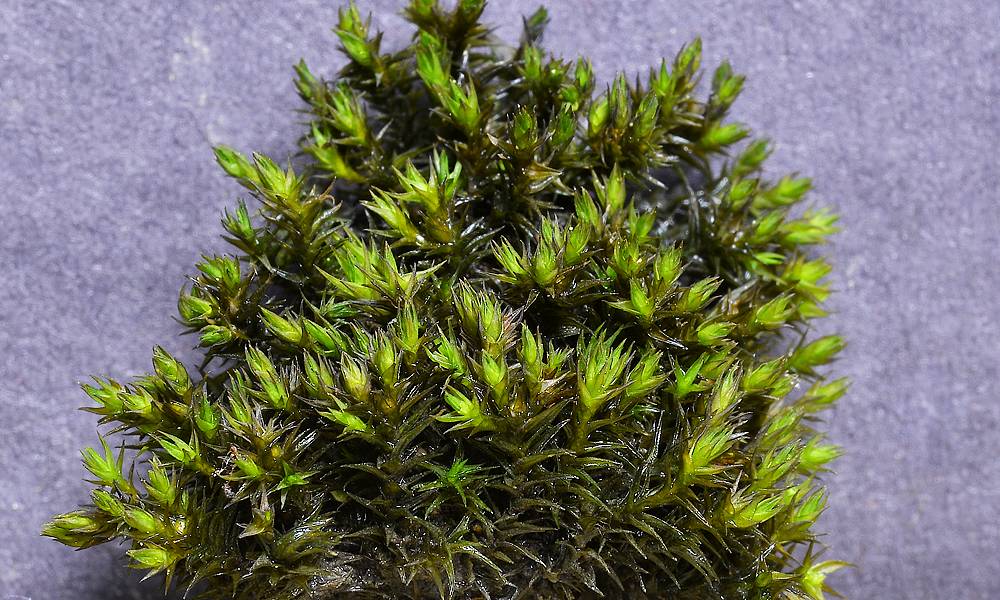
Consortium of Bryophyte Herbaria
- building a Consortium of Bryophytes and Lichens as keystones of cryptobiotic communities -
|
Family: Grimmiaceae |
Plants: 5–40(–70) mm, in dense cushions to loose mats, olivaceous, dark black-green to rusty-red-brown. Leaves: broadly oblong-ovate, oblong-lanceolate, to narrowly ovate-lanceolate, rarely ligulate, concave or keeled distally, margins plane, incurved or recurved, distal lamina 1-stratose to multistratose, specialized laminal and marginal chlorophyllose structures absent, muticous to long-awned but awns only rarely longer than lamina; basal cells oblate to elongate, with straight or sinuose and thin to thick cell walls; mid leaf and distal cells quadrate to rectangular, usually sinuose and thick-walled. Gemmae: present or absent. Sexual: condition autoicous or dioicous; perichaetial leaves enlarged or not. Seta: short to long, straight, arcuate, or rarely sigmoid. Capsule: erect, rarely pendent, immersed to long exserted, symmetric or rarely ventricose (subg. Grimmia), ovoid to obloid, rarely globose or cylindric; annulus poorly differentiated or well-defined comprised of quadrate, thin-walled or quadrate to rectangular, thick-walled cells; operculum mammillate, conic, or rostrate, falling detached from the columella. Calyptra: mitrate or cucullate, not erose, small to medium, usually covering 1/2 or less of capsule, sometimes just covering operculum, smooth. North America, Mexico, Central America, South America, Eurasia, Africa, Pacific Islands, Australia, Antarctic. Species 95 (43 in the flora). The genus Grimmia is found on all continents. However, nearly half (44) of the species are endemics and have restricted distributions. Most species of Grimmia prefer dry and temperate or cold environments†there is no species only known from tropical areas. Nearly all species of Grimmia are saxicolous with a marked preference for acidic bedrock. Only the subgenus Grimmia prefers calcareous rock, with a few other species in other subgenera characteristic of neutral to basic substrates. Hastings has attempted to place species in the subgenera Grimmia, Guembelia, and Litoneuron into groups of related or similar-looking ones. Because of the diversity within subg. Rhabdogrimmia, Greven felt it most convenient to present this group largely in alphabetical order. While the proper subdivision of Grimmia remains uncertain, both authors agree that for purposes of identification, the present division is best for this very complicated genus. Hastings authored the accounts for species 1–8, 10, 11, 13–16, 18, and 20–24, Greven those for species 10, 13, 18, 20, 25–43. Both authors together wrote the entire key. |
Powered by Symbiota.





